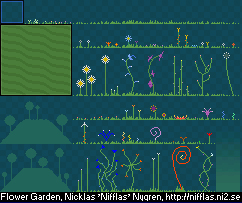Expected Gameplay Mechanics Part 1
I have decided to discuss common game play mechanics found throughout games. For the most part, I will be speaking in generalities. I will also be discussing commercial as well as Indie games. The purpose of this post is to discuss familiar gameplay mechanics that most games share and to perhaps avoid some of these cliche mistakes in the future.
This most may sound like a bit of a rant, but it stems from a series of recurring themes and gameplay devices that I have noticed in my years of gaming. These things apply to most not all games.
- Collecting Stuff
- Difficulty
- Points
- Boss Fights
- Save Points
- Unlocking Characters in fighting games
- Ninjas, Pirates, Robots, Zombies
Putting Polish on Simple Games
Often the charm of an indie game comes from its simplicity. Not having access to huge teams, and running with the occasional necessity of tapering your vision to your abilities can accent the unique gameplay and style of an indie game. An artist is often the most creative when he is forced to act wi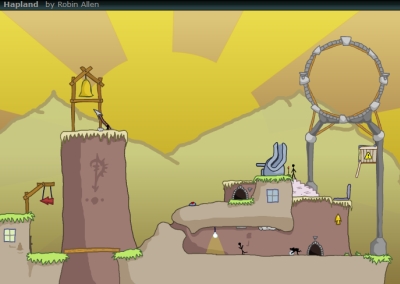 thin strict limits. This is one of the things I love about indie games. I assume it is a fun challenge for our favorite indie developers to try and find ways to use their limited resources to transcend audience expectations.
thin strict limits. This is one of the things I love about indie games. I assume it is a fun challenge for our favorite indie developers to try and find ways to use their limited resources to transcend audience expectations.
Unfortunately, too often games fall short due to what I expect is an opposing attitude: the game doesn’t have to look good or work perfectly, after all it’s just an indie game. Lazy developers sometimes think their audience won’t be bothered by minor flaws because the game was free. But overlooking these things makes a huge difference to gamers like me. Many simple games could’ve been a lot better by (believe it or not) making them even simpler.
The Indie Gaming Primer
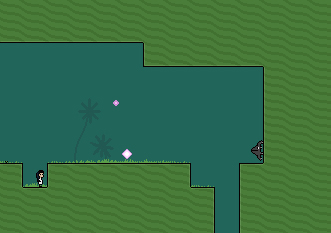 I spend a lot of time searching through lists of recommended indie games seeking out the best, but as many of you may know, the “best of” lists tend to get a bit repetitive. I wanted to make a feature that listed a number of lesser known games that aught to be tried at least once, and I will… But there’s a problem with that idea. I just can’t keep myself from pulling out the A list.
I spend a lot of time searching through lists of recommended indie games seeking out the best, but as many of you may know, the “best of” lists tend to get a bit repetitive. I wanted to make a feature that listed a number of lesser known games that aught to be tried at least once, and I will… But there’s a problem with that idea. I just can’t keep myself from pulling out the A list.
So… this is not that feature. Instead, this is my repetitive list of must-play indie games, designed to liberate my aforementioned list of lesser known games from the influence of these giants.
The premise of this list is as follows: anyone who wants to be able to hold a knowledgeable conversation must be familiar with these games. That’s not so demanding a task as I make it seem, of course. You probably won’t be able to step away from them.
The order in which these games are listed is arbitrary.
Pillow Fortress
This idea came as a collaborative effort between myself and Eric Harm.
Pillow Fortress: A single player fort building simulation with an isometric perspective and simple point-and-click interface.
Goal: To optimize the construction of a fortress based on the available materials within each room.
Challenges: Resources and space are limited and gravity will tend to collapse the constructions.
The premise of Pillow Fortress is that the unnamed playable character’s parents are spending the night out and her older sister is baby-sitting. To celebrate, she’s going to pass down the ancient art of pillow fortress construction. The tutorial for the game would be her first lessons.
In Pillow Fortress, players are presented with two gameplay options: free play and challenge. Free play is self explanatory. In challenge mode, each level is presented with a certain goal. A few examples could be:
- Build a fort that can hold three people sitting
- Build a fort that can hold two people laying down
- Build a fort that can support two heavy pillows
- Build a tunnel from an existing fort to the kitchen
- Remove and replace dad’s favorite chair without knocking down the fort
User and Procedurally Generated Content
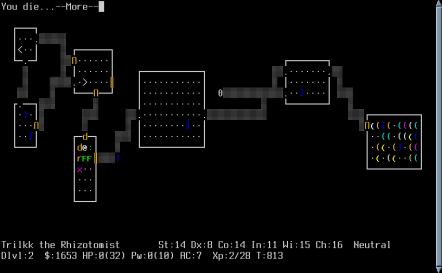 While we are on the subject of content creation I thought I would talk about this…
While we are on the subject of content creation I thought I would talk about this…
This post is mostly a discussion of theory. Editors and Procedurally generated content can be very difficult to make. Especially when under the limitation of some game engines and creators.
We are past the days where designers are forced to provide players with large amounts of content which add replay value to their games. As a matter of fact, by providing players with procedurally generated content or editing tools for their respective games, players theoretically have the ability to create an almost infinite amount of content. Being limited by only your imagination and ambition, players are now able to create very imaginative and challenging levels which the original designers of the game may have never thought of.
Since most indie teams are small and have limited resources these level editors provide a great way to add life to their games. Small communities in which fans share and trade content are growing at a rapid rate. Indie games on the PC are unique in regards to the fact that the games and additional content is easily distributed, talked about (forums) and patched. Some games are even open source like Knytt Stories (we love Nifflas here) and NetHack which spawned a large amount of mods, remakes and levels.
Mods are on a slightly different level than added content such as levels. My definition of mods involve actually editing the game source code or project files to change or evolve the game. I won’t be discussing mods today but I will address the issue later.
Puzzle Scramble
Puzzle Scrambler
Here’s a quick one…
I have always been a fan of procedurally generated content; Diablo, Nethack, Dwarf Fortress. This idea is simple: to construct a procedurally generated puzzle game which constantly evolves and challenges the player.The puzzles will be simple, generated by predetermined algorithms. Some of the puzzles could be as simple as figuring out the next number in a sequence, to analyzing patterns in shapes. The objective would be to navigate through the maze of puzzles as quickly as possible. Each sequential level will include more puzzles, timers, harder puzzles and more variety.
Graphics:
I am thinking that by having this game text only would add more of a hardcore puzzle feel to it. Graphics would perhaps detract from the game play. Navigating menus through text and typing answers manually would give it sort of a “hacker feel.” Perhaps the story could include something of that connotation.

If you haven’t noticed this game is semi-inspired by Professor Layton and would be playing in a similar way.
Here are some examples of sequence puzzles that I had in mind.
http://www.puzz.com/lloydkingpuzzles.html
http://www.research.att.com/~njas/sequences/Spuzzle.html
http://brainden.com/number-puzzles.htm
Indie Game Archive
While I was doing my usual reading of the Penny Arcade forums yesterday I stumbled upon this: a large collection of indie games available for download without hassle. While some of them are remakes, there is still a ton of great content. There is no better way to learn a dev environment than remaking your favorite classic anyway!
If anyone knows of any other large databases like this one, please share.

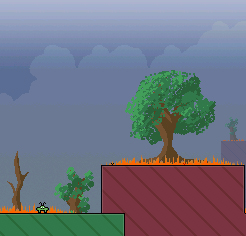 Anyone who has read just about any one of our posts knows that we’re big Nifflas fans, so it was a great honor when he agreed to be interviewed. I won’t bog you down with a bunch of blah blah blah, since you’re obviously here to see what Nifflas has to say, but it is tempting. I could rant for paragraphs about this; however, I guess I’ll just go with the following.
Anyone who has read just about any one of our posts knows that we’re big Nifflas fans, so it was a great honor when he agreed to be interviewed. I won’t bog you down with a bunch of blah blah blah, since you’re obviously here to see what Nifflas has to say, but it is tempting. I could rant for paragraphs about this; however, I guess I’ll just go with the following. 
